
Having conducted the Vancouver Chinatown media campaign in late 1995 and early 1996 (see [ON MY WAR PATH - 001-004]), and the anti-hunting Bear Referendum campaign in mid and late 1996 (see [ON MY WAR PATH - 005-010], I moved on to saving wild tigers, or should I say Free Tigers, where they lived (still do and hopefully always will).
In June and July 1996, while I was on the road in British Columbia confronting and debating hunters (see [ON MY WAR PATH - 005-010), WCWC's head office in Vancouver submitted a summary of my work thus far to the Canadian International Development Agency (CIDA) as part of an application for a grant for me to go to India to help save the Bengal tiger from extinction in the wild. By late 1996, we had secured a $60,000 project grant to fund my first trip to India, spanning December 1996 and March 1997.
Why India? Time and funds were so short, and the problem was so staggering, and the solution was so immense, that we could only choose one subspecies to concentrate on. We picked the Bengal tiger for its being deemed the most savable, i.e. relative to the other lingering subspecies like the South China tiger or the Sumatran tiger. It was a choice of desperation.
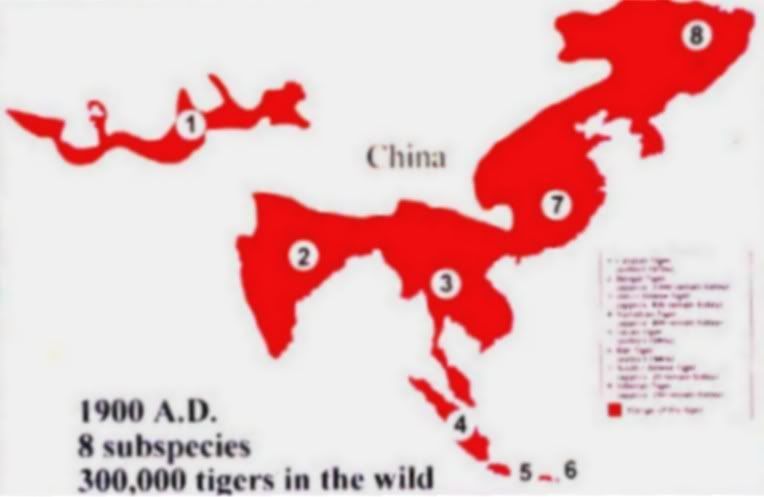
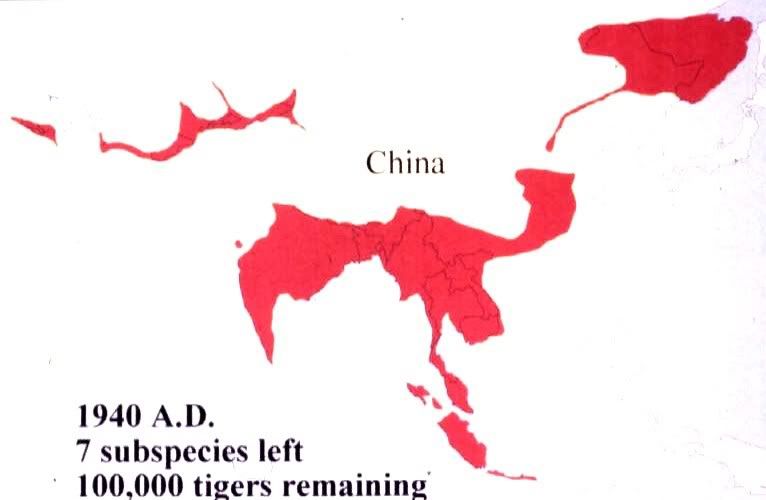

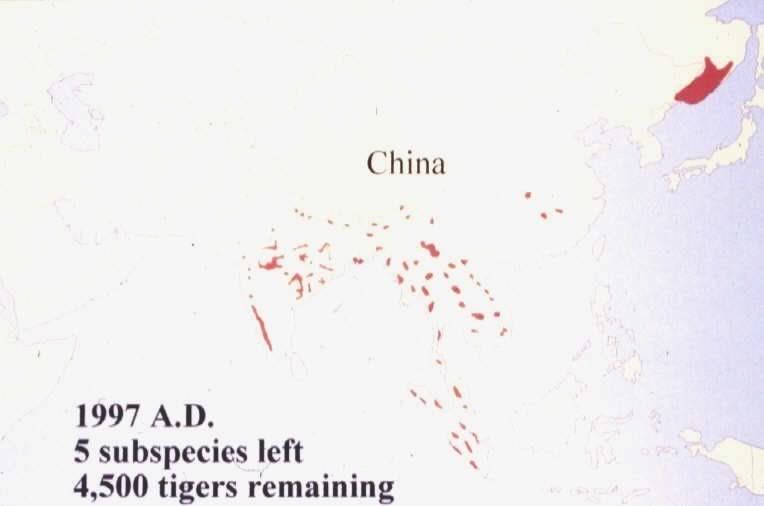
In the 1997 Indian trip, I mainly acclimatized myself to India - socially, educationally, historically, politically and scientifically. This included meeting and working with the great British tiger preservationist Belinda Wright, the fearless anti-tiger-trade activist Ashok ("Ashook") Kumar, on whose desk was a plaque given to him by the lawyer of his adversaries which said, "Next to God, Ashok Kumar is everywhere.", and my dear friend Faiyaz Khudsar.
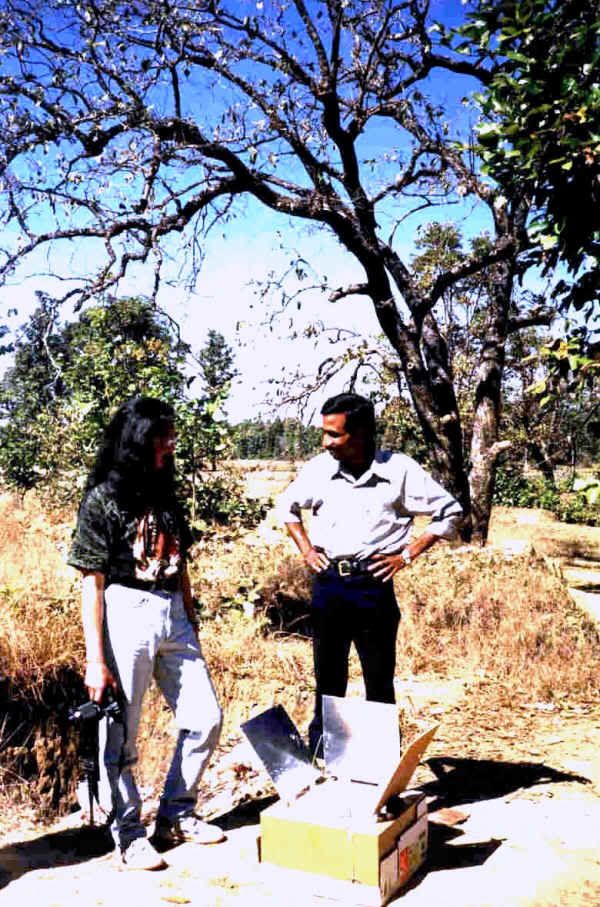
Anthony Marr and Faiyz Khudsar discussing over a demo portable solar oven.

In this first trip, I learned mostly by observing and acting. At urban Indian schools,
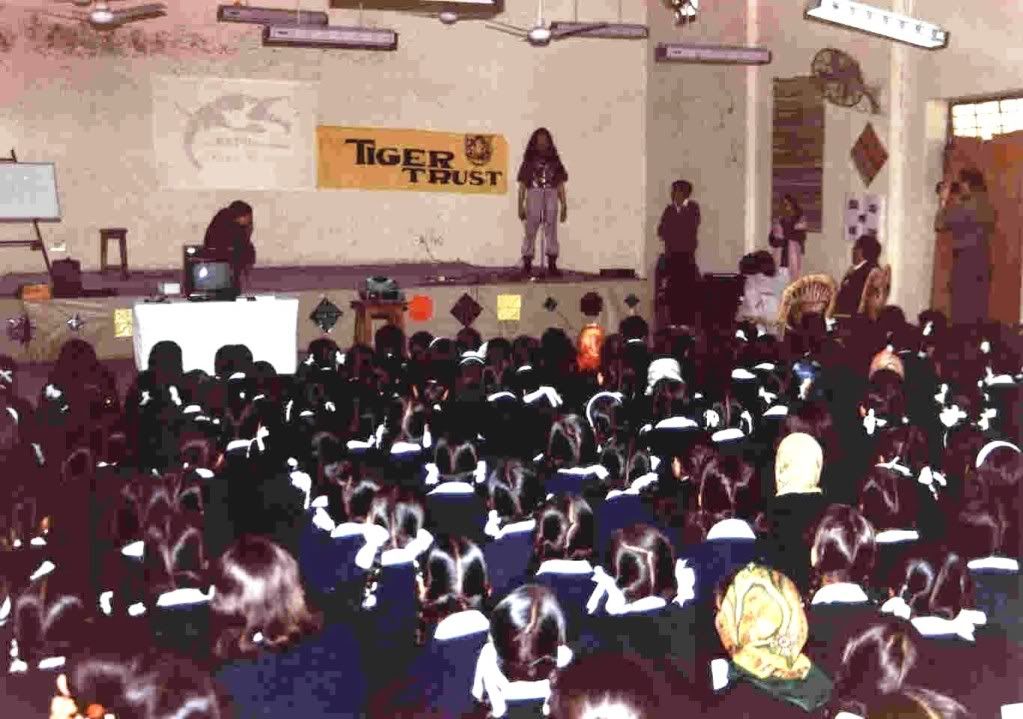
where I was treated like a dignitary by the faculty and staff,
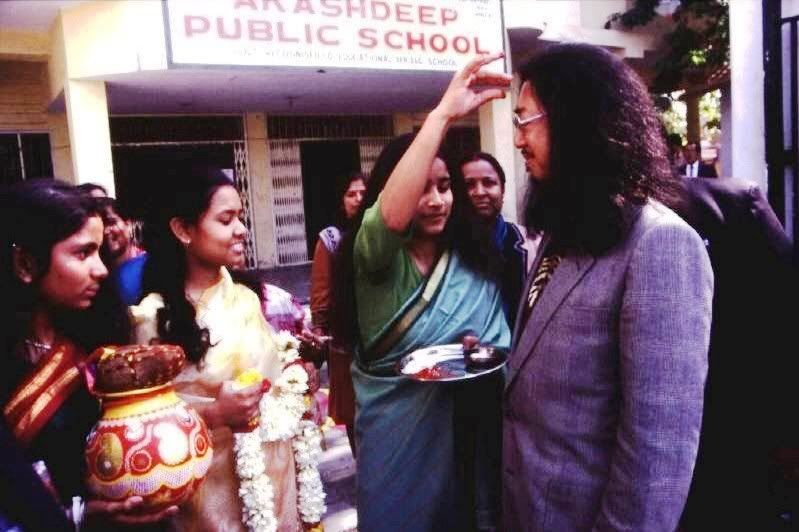
and like a rock star by the students who swarmed around me, touching my long hair for good luck,

I learned by teaching, and by talking to the more senior students afterwards.

Another way of learning was through executing dangerous undercover operations in deep urban enclaves that not even police dared enter except in threes and fours. There I would go in alone posing as a Chinese buyer, at most with another undercover colleague, guided by one or more of the criminals to where the tiger skins and bones were stashed. I've seen these items so fresh there were still ants crawling all over them. If I got caught, I would not get back out alive. Obviously, I'm still alive and kicking; unfortunately, the person who took over from me is not.
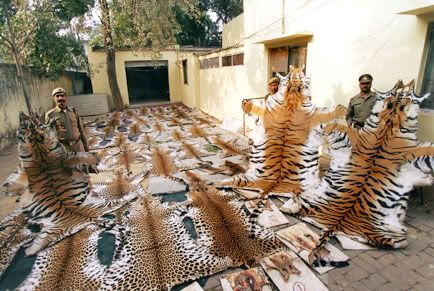
An interesting aside, while in Calcutta, I was given a safe-house to stay at for a couple of weeks. It was a two-room suite on the fourth floor of a wood-frame building with a ante-room opening to the street, and a back-room with no window at all. There was of course no elevator. It was very hot outside - 110F in the shade. But when I entered the ante-room, I was bowled over by the heat in the room - easily 120F+. Thinking that it was my room, I thought, "OMG, how can I last two weeks in this oven?" But then, the servant showed me into the back-room, and I could not help but let out an ecstatic "Aahhh". It was a cool 65F, no more, bordering on being a little too cold. When I looked around, I found out why. Mounted in the wall between the master's chamber (mine) and the servant's quarters (the ante-room),
was an air-conditioner, with its cool end in my room, and its hot end in the servant's. The wonders of the caste system.
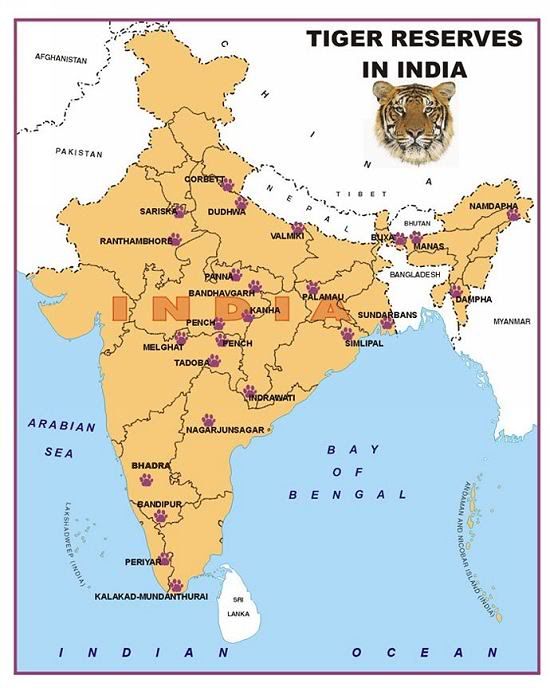
Of course my favorite places to go in India by far were/are the tiger reserves of which there were/are about 25. Again, instead of working on all 25, I had to restrict myself to working at and around two national parks - Bandhavgarh and Kanha, while making short visits to a few others, including Penna, Pench and Ranthambhore.
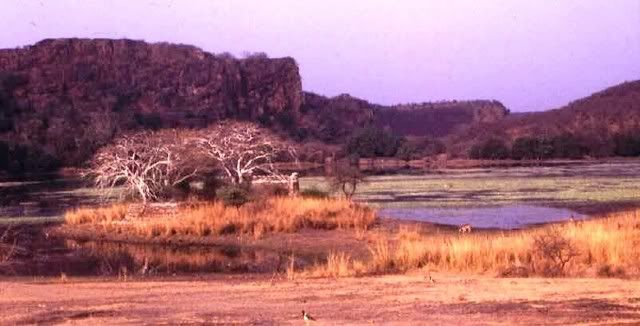
Ranthambhore
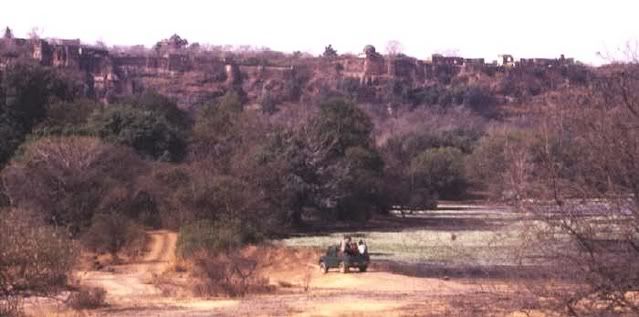
Ranthambhore Tiger Reserve
Of these, probably Ranthambhore was the most famous, and it was also at Ranthambhore that I saw for the first time a naked demonstration of human impact against the environment. I was driving toward a village to pay respects to a shrine dedicated to the legendary tiger preservationist Fateh Singh Rathore.

Along the way, I began to see women with head-loads of fuel wood walking in the direction I was going. I pulled the car off the road and asked one of the women via my companion where she was headed. The very village I was heading for. We asked her how far the village was, and she said about 7 miles.
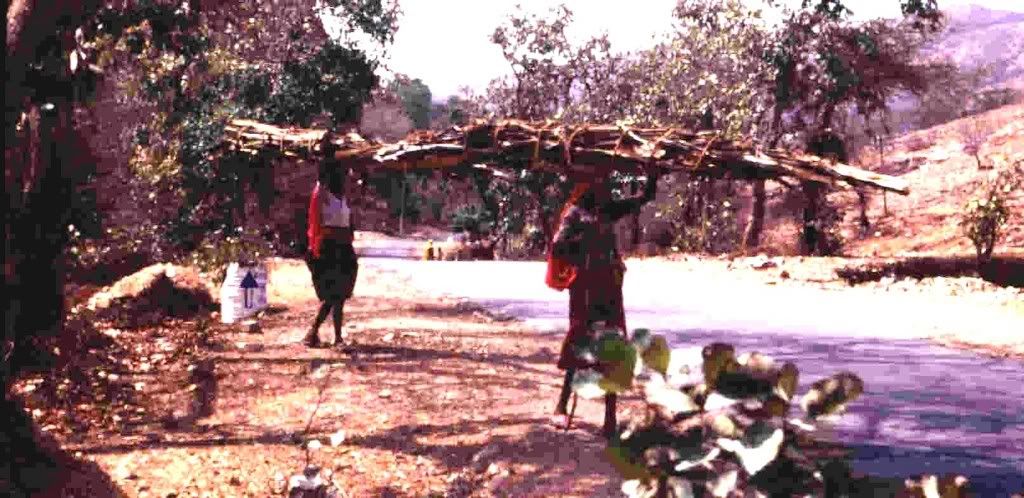
We asked her why she had to walk that far to get a bundle of wood. She said that any closer, all the wood had been cut off. So they had to go farther and farther for that resource. Sure enough, as I drove on toward the village, the landscape made an abrupt change - from forested land to desert, all the way to the village and beyond.
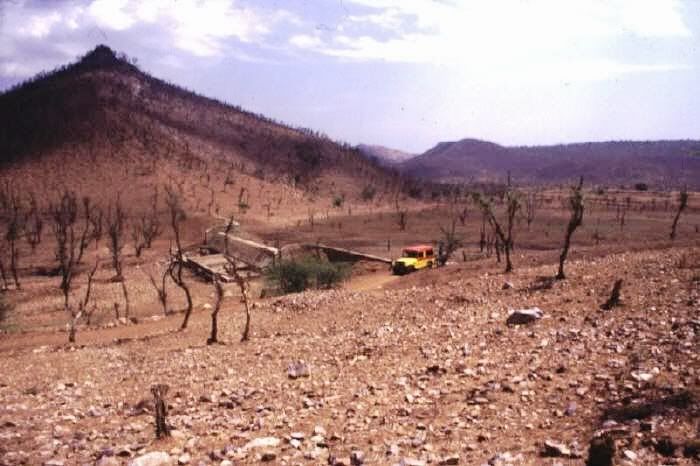
In most places in deep rural India, the only fuel available is wood. Deforestation is accelerating due to unrestrained population growth. India is estimated to overtake China in population within 2 decades. By then, there may not be any forest left, and along with desertification will disappear India's diverse wildlife, beginning with the Bengal Tiger.
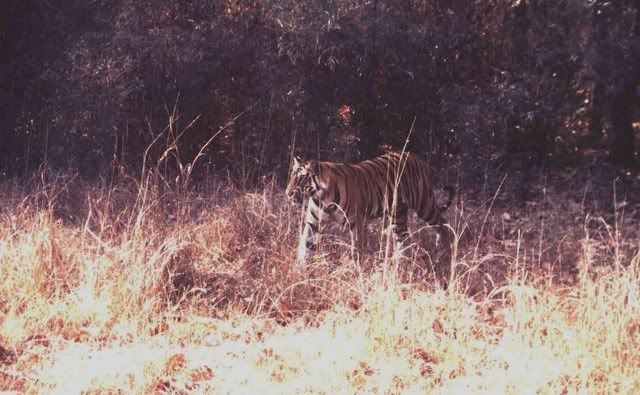
Picture by Anthony Marr
One way we did to help save India's last wild lands is to introduce green tech to displace wood burning, including biogas, solar ovens, solar mirrors, and solar lanterns. My friend and colleague Faiyaz Khudsar, one of the most honest and reliable people I know, give bi-lingual slideshows to village elders, and often drive them into the park to see the tiger for themselves.
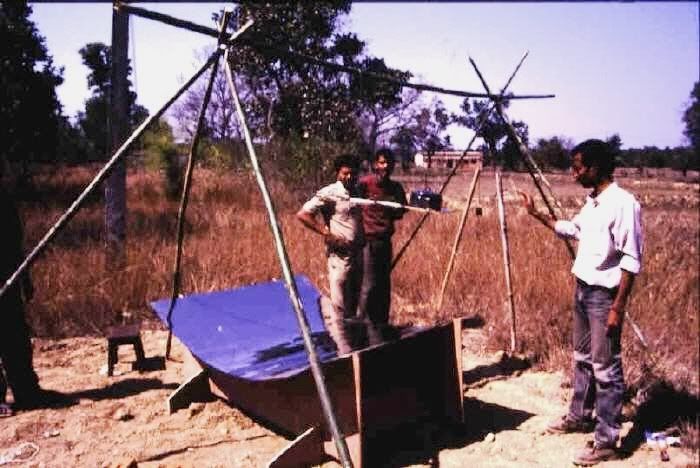
Faiyaz Khudsar experimenting with a solar hot-plate constructed out of locally available material
Some, born in tigerland, have never seen a tiger in their lives. The children are always thrilled to see the deer and the Langur Monkeys. We also established a free school, conservation centre and medical clinic for them. The children living in the nearest village to our lodge are invited in to play soccer on our grounds.
Volunteers Chris Lindstrom and Chris Cook with village elders in the Gypsy driven by Anthony Marr into the Kanha tiger reserve
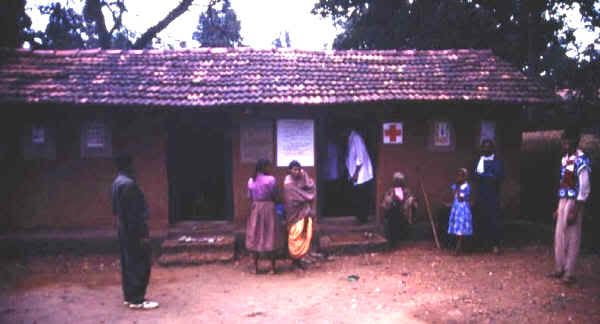
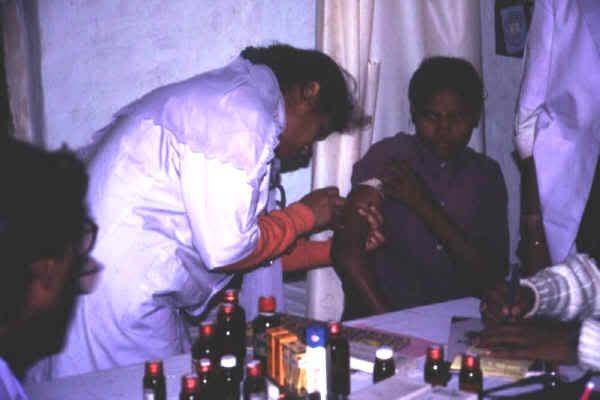
In spite of all this activity, I still found time to speak at the wildlife conferences at or near the tiger reserves. One example was the environmental conference at the "Bare Foot College" in Tilonia, Rajasthan, which was attended by representative from dozens of countries.
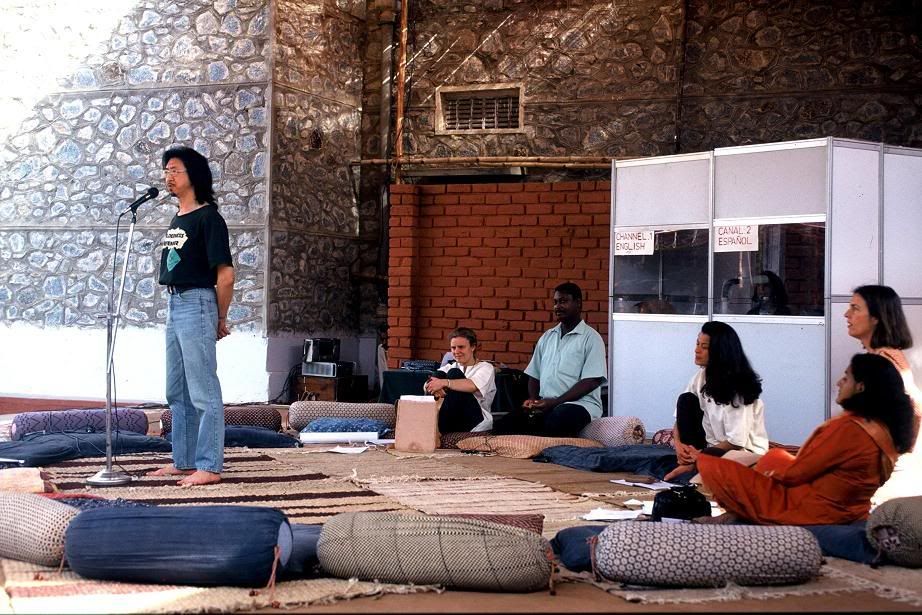
International environmental conference in Tilonia, Rajasthan, with representation from over 100 countries present; note translation booths - in at least 4 languages
People often take me for an expert, but I acquire my knowledge as I go. How smart is a tiger? for example. My observation told me that the tiger in its own way is very smart. Here is a first hand experience:
I was on an elephant (the only means to go off road other than on foot), ambling through a forest in the Kanha tiger reserve, visibility 200'. On the forest floor is a dense undergrowth about 6' high, visibility 50'. I saw a Sambar about 150' ahead, upwind. The Sambar was not disturbed by the loud noises the elephant was making over the thick layer of dry dead leaves carpeting the forest floor, and kept on feeding.
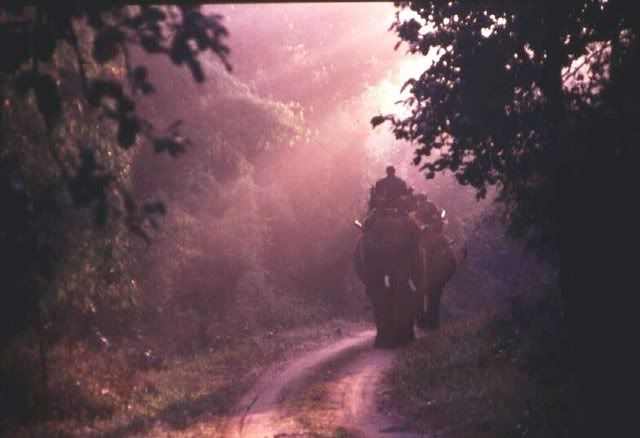
On the other hand, it is highly sensitive to the tiny sounds made by a tiger when stalking prey. At the slightest hint of such a sound - a snap of a twig, a rustle of dry leaves, bird flying off - the Sambar would tense up, stomp on the ground, emit a honking alarm call, then dash away. In fact, it is the alarm calls of Sambar and Cheetal, and Langur monkeys, that often alert us to the presence of a tiger, or leopard, at or near the location where the alarm call is emitted.
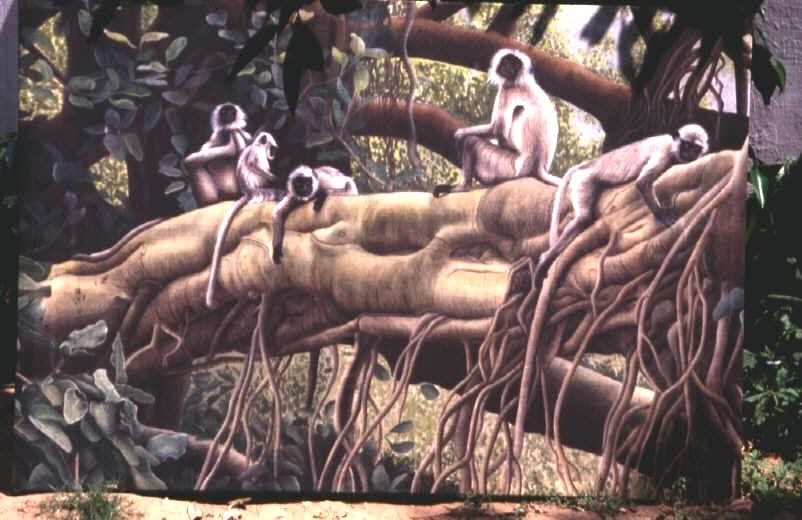
Something orange-yellow caught my eyes. I looked down, and, lo and behold, there were not one but two tigers stalk-walking alongside the elephant, one on each side. They paid no attention to me whatsoever, but were in a stealth mode, nose pointed rigidly in the direction of the Samba, body lowered, tense as a drawn bow, in slow motion. Since we were going upwind, and due to the limited visibility on ground level, the tigers could smell the Samba, but not see it.
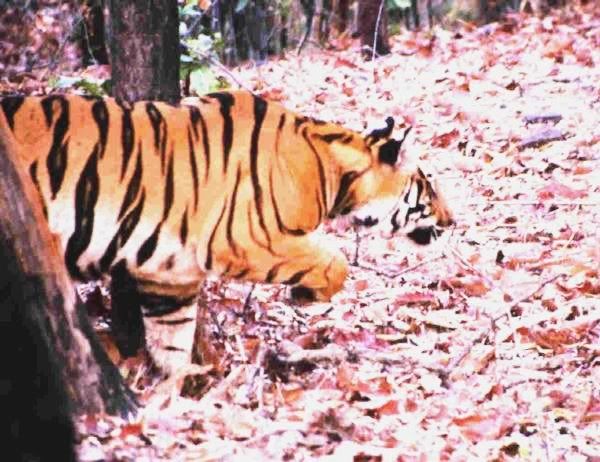
Picture by Anthony Marr, @ the Kanha Tiger Reserve, India
Due to the noise caused by the elephant, the Samba could not hear the tigers, and due to the wind direction, could not smell them either. I then realized that the tigers were using the noise made by the elephants to cover up the tiny sounds that they themselves made.
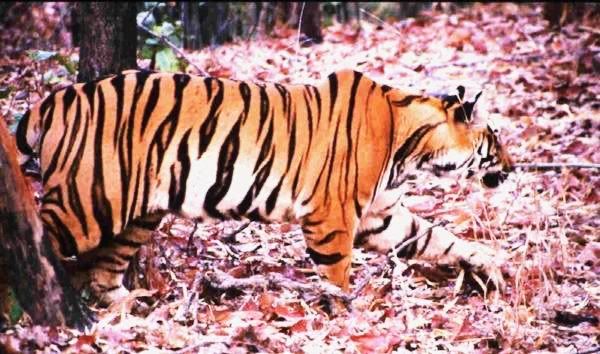
Picture by Anthony Marr, @ the Kanha Tiger Reserve, India
Finally, we went within 50' of the Samba, and, as if by agreement, both tigers shot forward towards the Samba. The Sambar honked loudly, while turning to dash away, with the tigers in hot pursuit. Soon, they were lost to view. I never did find out if the Samba got away or not, but I was amazed by the intelligence of the tiger.
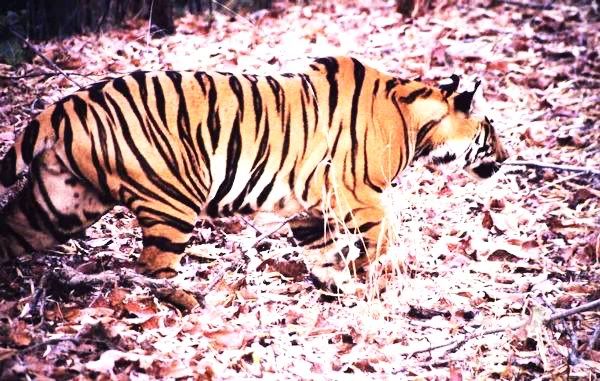
Picture by Anthony Marr, @ the Kanha Tiger Reserve, India
It was too hot to work in India after March, when I would return to North America to work on the Chinatowns some more - those in Toronto, Ottawa, San Francisco, Los Angeles, New York.
I also did educational outreach at schools and to communities at large, and even these made news (see below).

In the summer of 1997, WCWC organized their inaugural Save The Tiger Walk in Stanley Park, and over 1000 people participated. This success, however, did not come easy. Campaigner Tim Murphy and I spoke on saving the tiger at no fewer than 30 schools in the Lower mainland, which was where the participants came from. I have never seen such a large animal-oriented event before or since.


More in [ON MY WAR PATH - 012]
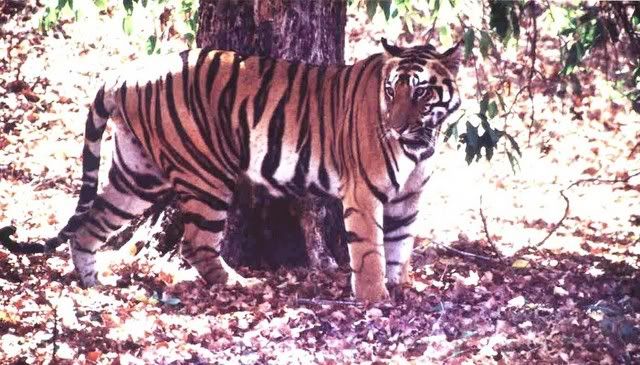
Picture by Anthony Marr
1997-02-13-4 The Vancouver Sun by Anthony Marr
[Tiger, tiger, burning…out?]
"… If we commit to Gaia our heart and soul, our children may just see a new world emerge, one more compassionate than ever before, perhaps one destined for the stars."
1997-03-19 The Hindu, Delhi, India
[In aid of the vanishing Bengal Tiger]
"Finally, the BET’R Campaign to save bears, elephants, tigers and rhinos has entered India as well…"
1997-05-08 The Georgia Straight, Vancouver by Roland Goetz
[Save tigers rather than saving feelings]
"… According to the article ([Bloody Superstition] - April 14), Garry Grigg of the Canadian Wildlife Service says, ‘We don’t want to be too heavy. We have got too many new Canadians here, and it takes a while to assimilate. We’re dealing with something that is thousands of years old.’
"My question is, would we allow other cultural practices, such as incest, clitoral mutilation, bestiality, or polygamy, to be imported into Canada?…
"… to save some feelings, we (may be allowing) a magnificent species to be destroyed."
1997-05-15
Korea Leads Illegal Trade in Bear Parts
LONDON -- (ENS) -
In a report released this week, an international coalition of wildlife organisations, including the London-based World Society for the Protection of Animals (WSPA), expose South Korea92s leading role in the illegal trade in bear parts. The report , "Killed for Korea" concludes that "South Korea and Korean people abroad represent the bear92s worst enemy after habitat loss."
Undercover film recently taken by animal campaigners shows Korean-sponsored bear poaching and gallbladder smuggling on an international scale as well as the killing of endangered bears for South Korean restaurant-goers.
The bears are desired for bear paw soup, a highly prized delicacy in South Korea. Diners will pay in excess of US$1,000 for a bowl of bear paw soup.
WSPA, together with the Korean Federation for the Environment Movement (KFEM), Humane Society of the US/Humane Society International (HSUS/HSI) and the Global Survival Network (GSN), is lobbying the US government to sanction South Korea over the illegal trade in bear parts. The organisations, with a total membership of over four million people worldwide, are considering an international boycott campaign of Korean goods, if their current approaches to Korean authorities are unsuccessful.
Andrew Dickson, WSPA chief executive, said, "Consumption of bear parts is a national disgrace for South Korea. We are trying to persuade the Korean authorities to stop this illegal trade which is pushing Asian bears towards extinction."
WSPA92s campaign is being backed by the Korean Federation for the Environment Movement (KFEM). Kwon Heanyol, spokesperson for KFEM said, "This outdated practice is a slur on our national reputation. It makes us look cruel and barbaric. Herbal, synthetic and Western alternatives exist for bear gallbladder. Why can92t all Koreans use these instead of continuing to torture and slaughter bears?"
Anthony Marr, organizer of Bears, Elephants, Tigers, Rhinos (BETR), a conservation group based in Vancouver, British Columbia confirms that South Korea is the world's leading consumer of bear parts.
Marr says, "South Koreans sometimes import black bears on the pretext of using them for zoo exhibits, then they have them killed in front of restaurant customers to prove authenticity and freshness."
Marr says he has read reports of caged bears lowered live onto hot coals to have their paws cooked. This procedure is supposed to guarantee freshness, authenticity and entertainment for the customer.
Marr has a video showing a 1989 restaurant menu from the posh Hilton hotel in Seoul offering "bear palm soup. Price - current."
Bear paws are considered a delicacy, not a medicinal, but bear gall bladders are prized for their medicinal effect.
The powdered bile taken from the bear galls has a whole range of uses, primarily for digestive healing and intestinal illnesses including parasites and bacterial infections. The powdered bile is used as an anti-spasmodic, a pain-killer, tranquillizer, an anti-allergenic, and a cough remedy. It is also considered to be a general purpose body tuning tonic. Bear bile is even said to restore a liver damaged by overdrinking.
Unlike tiger bones and rhino horns which have no real medicinal value, bear galls do contain ursodeoxycolic acid which does have a medicinal effect. This acid was patented as a synthetic in Japan in the 1930s. Today, 150 tons are used annually worldwide.
There are seven species of bears in the world, excluding the panda and koala, which are not considered to be true bears. Three bear species are endangered, particularly the Asiatic black bear, which used to be the main source of galls. The Asiatic black bear is now almost completely wiped out in China and Korea.
To meet the demand from Korea and other Asian countries, poachers have been taking bears from Russia and North America. Marr says poaching is "huge" in North America. Poachers have been caught in British Columbia recently, but provincial laws have no teeth, as the indigenous bears are not yet listed as endangered.
The penalty is very light when poachers are caught in B.C. Marr says, "Someone recently caught with 90 galls, which would easily sell for US$250,000 thousand in Korea, was fined $3,500 bucks, not even the price of one gall in Korea. For every batch of poached bear parts discovered by law enforcement officers, 49 get away. Customs officials estimate they can check only 2-3% of what goes out of Canada."
Marr estimates that between 20,000 and 40,000 bears are poached in Canada yearly. Legal trophy hunting kills 22,000 more.
In London, the WSPA is offering broadcast quality undercover footage showing the killing of endangered bears for South Korean diners and the farming of bears in China, some of which are destined for the Korean market
(From the Environment News Service: http://www.envirolink.org/environews/ens/)
1997-07-08 The Ottawa Citizen, Ottawa, Ontario by Finbar O’Reilly
[Animal activist targets Chinatown]
"… One Ottawa professor of traditional Chinese medicine, who asked not to be identified, said she abides by Canada’s laws banning the sale of tiger and bear parts, but that doesn’t mean she agrees with them.
"‘How come you have to protect the tiger, but not the cow?’ she asked. ‘I am a doctor. I want to treat people. If you care more about human than animal (sic), then why not use animal parts for safety?’…
"Mr. Marr, who plans a visit to the Chinatowns of both Toronto and Ottawa (to demonstrate that the new law) is not being properly enforced…"
1997-07-11 The Toronto Sun by Tom Godfrey
[Tiger goods on shelf]
"… Toronto has become a hotbed for the sale of animal parts, including penises… said Anthony Marr…
"Marr said within an hour he was able to buy processed medicines containing or claiming to contain tiger bone, seal penis, deer penis…"
1997-07-15 The Globe and Mail, national by Michael Valpy
[The trade in seal and tiger parts]
"This is a Canadian story. Anthony Marr, a Chinese Canadian who lives in Vancouver, is sitting in a Toronto hotel restaurant waiting for a television crew.
"When the crew arrives, he will take its members to Toronto's Chinese community’s downtown commercial district on Spadina Avenue. Here they will wire him with a microphone and film him buying illegal tiger bone pills and legal, regrettably, seal penis pills…
"Mr. Marr, an intense man, says he has been embarrassed by all these practices…"
1997-10-01-3 News Leader, Burnaby, BC
[Gilmore students join efforts to "Save-the-Tiger"]
"… ‘Unless a huge conservation effort ignites now, the tiger will be extinct in the wild by the year 2004…’ said Anthony Marr… who gives the slideshows to the schools. ‘Some adults say, "How many tiger are there in Canada? Why should we be bothered? Go ask the kids.’…"
1997-10-04-6 The Peace Arch News, Surrey, BC by Tracy Holmes
[Care for the cats]
"Save the tiger.
"That was the message students of Peace Arch Elementary received at a presentation by… Anthony Marr…
"Under the watchful eyes of a 50-foot inflatable tiger, the kids learned the only 4,000 tigers remain in the wild, and that some subspecies totaled less than the number of students in the gym.
"But, ‘I do not believe the tiger is doomed,’ Anthony Marr told the kids. ‘The reason I believe this is because nobody has ever asked kids like you to help out. If we can get kids around the world to say, ‘I want to save the tiger’, I believe the tiger will be saved.’…
"He also asked them to come to the Save-the-Tiger Walk at Stanley Park Oct. 18."
1997-10-08-3 The Vancouver Courier by Gudrun Will
[Students take tiger by the tail]
"High school environmental club rallies behind animal activist.
"An auditorium full of Kitsilano high school students roared in appreciation…
"Inspiring youth, Marr believes, is the only hope to save the rapidly diminished species…"
1997-10-16 The Westender, Vancouver
[Halloween fun, Tiger Walk set]
"… The WCWC has organized Save-the-Tiger Walk ’97…"
1997-10-19-7 The Province, Vancouver
[Walking for wildlife]
"Hundreds of concerned people took part in the ‘Save-the-Tiger Walk’ in Vancouver’s Stanley Park yesterday. They were walking to raise money to protect the dwindling number of tigers left in the wild."
1997-10-19-7 Ming Pao Daily News (Chinese), global
[1,000 people walk to save 4,000 tigers]
"WCWC’s Save-the-Tiger Walk attracted over 1,000 children and their teachers and parents, and raised $20,000…"
1997-10-29-3 The Comox Valley Echo by Diane Radmore
[Service to remember animals]
"Animal lovers of all kinds are invited to come hear guest speakers and attend an outdoor gathering called In Remembrance of the Animals at noon Saturday, November 1, at the Sid Williams Foundation in downtown Courtenay…
"… Anthony Marr, initiator of the worldwide BET’R Campaign… will also be in attendance…"
1997-10-31-5 The Comox Valley Record by Diane Radmore
[Vigil for lost wildlife]
"Local activists to speak at downtown rally tomorrow…
"… Since last year’s referendum on bear hunting in BC campaign, Marr has been to India on behalf of the dwindling tiger population and was a guest speaker at last week’s International Fund for Animal Welfare Conference concerning the East Coast seal hunt…"
1997
New Internationalist magazine
Biodiversity Threat:
The traffic in endangered species for their skins,
organs, horns or as exotic pets is putting some of the
world's most vulnerable wildlife in dire peril.
photo by BJORN ULFSSON
Bad medicine
Ross Crockford
tells the story of a man who has stepped on toes
from Campbell River to Hong Kong to stop a pernicious trade
Anthony Marr knows what it feels like to be endangered. Last summer the Vancouver environmentalist was touring small towns in British Columbia, gathering signatures to force a referendum outlawing the hunting of bears in this Canadian province. Often the reception he got was downright hostile. Many people in the countryside claimed he was trying to destroy their livelihood and their heritage. ‘In Campbell River,’ recalls Marr, ‘a hunter pointed at me and said: “I saw you on TV this morning. The price on your head just went up $10,000.”’
Pretty frightening, but Marr has heard similar threats before, and often made in defence of a culture that is much, much older. Marr’s referendum drive was part of a larger, ongoing campaign (acronymed as BET’R) he has been running since November 1995 to stop the worldwide slaughter of bears, elephants, tigers and rhinos – big-game animals whose body parts are frequently used in traditional Chinese medicine. Marr is convinced that as Asia prospers and trade becomes further deregulated the demand for these animal parts will skyrocket.
Fortunately he’s in a position to do something about it. Since he was born in China and raised in Hong Kong, Marr figures he’s entitled to criticize things he grew up with that strike him as mere superstition. One is the belief that consuming part of a powerful animal gives strength to a corresponding part of your body. ‘When I was a kid my parents would give me things like bear gall and tiger bone as if it was aspirin,’ says Marr, who’s now 52. ‘Endangered species wasn’t part of my vocabulary at all.’
Consequently Marr spends much of his time speaking at Vancouver schools with large numbers of Chinese students, many of whom are hearing about the problem for the first time. He also speaks on Chinese-language radio talk shows. Sometimes listeners accuse him of defaming the Chinese reputation. Marr replies that, on the contrary, he is trying to save it: if we drive a species to extinction, he says, we can never regain respect in the eyes of the world.
‘A white person saying these kinds of things might be called a racist,’ says Marr. ‘But when a Chinese person is pointing the finger at Chinese culture, it’s more like self-examination.’
If public education is the long-term ‘yin’ of the BET’R campaign, the aggressive ‘yang’ is law enforcement. Until recently it was common to find rhino-hide and tiger-bone pills on the shelves of apothecaries in Vancouver’s Chinatown, and many did a brisk trade in gall bladders taken from bears poached in British Columbia and smuggled by individuals to Asia to sell for as much as $18,000 apiece. After a report by the Washington DC-based Investigative Network revealed the extent of the problem (one dealer offered a discount for 50 galls or more), law officers raided six businesses and seized 191 bear galls. Citing cases like this, Marr persuaded the Canadian Government to proclaim a Wildlife Trade Act, with penalties for traffickers of up to $150,000 in fines and five years in prison.
‘Chinese people are very pragmatic,’ says Marr. ‘They do things to produce results. They will abide by the law if the law comes down on them. Besides, if I work on the law I can affect all of the stores instead of just one of them.’
Not content to stop there, Marr then began the drive for a referendum to outlaw all bear hunting in British Columbia. Though the North American black-bear population is considered ‘healthy’ and the grizzly is classified as ‘threatened’, Marr argues that instituting such a ban when both species are endangered will be too late.
Hunters replied with death threats and racial insults, and obstructed and photographed people who wanted to sign Marr’s petition. In the end his volunteers managed to collect over 90,000 signatures – half of what was needed to force a referendum, but enough to argue convincingly that many wanted bear hunting stopped. Marr called on the provincial government to set aside more wildlife reserves, increase the penalties for poaching and ban the spring hunt, when most poaching occurs.
Now Marr is taking his BET’R campaign around the world. He plans to speak in several North American cities with large Chinese communities and after that in several Chinese-speaking capitals of the Pacific Rim. ‘There have been many articles crying for help, saying that what is needed is a person of Chinese extraction to tackle this problem,’ he says. ‘So here I am.’
Marr knows there will be some risk; organized crime is directly involved in the six-billion-dollar annual trade in endangered species, and it’s certain those involved will threaten him if they they think he’s jeopardizing their business. But after tangling with British Columbia’s hunters, he should be ready.
Ross Crockford is a freelance journalist working out of Vancouver.
©Copyright: New Internationalist 1997
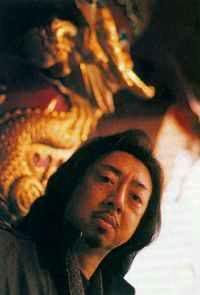
Picture used in article
Anthony Marr, Founder and President
Heal Our Planet Earth (HOPE)
Global Anti-Hunting Coalition (GAHC)
Anthony-Marr@HOPE-CARE.org
www.HOPE-CARE.org
www.facebook.com/Anthony.Marr.001
www.facebook.com/Global_Anti-Hunting_Coalition
www.myspace.com/AnthonyMarr
www.youtube.com/AnthonyMarr
www.HomoSapiensSaveYourEarth.blogspot.com
www.DearHomoSapiens.blogspot.com (AM's 3rd-book-in-the-making)
www.myspace.com/Anti-Hunting_Coalition
www.ARConference.org
No comments:
Post a Comment